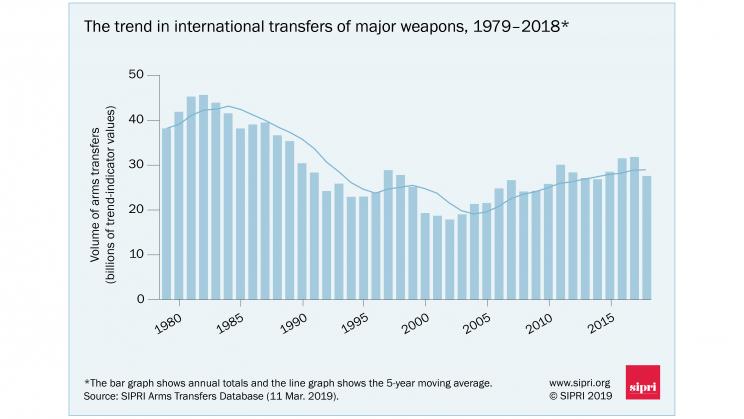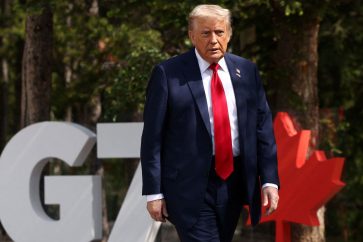Arms flows to the Middle East have increased by 87 percent over the past five years and now account for more than a third of the global trade, the Stockholm International Peace Research Institute (SIPRI) said in a report on Sunday.
The defense think-tank’s annual survey showed that Saudi Arabia became the world’s top arms importer in 2014-18, with an increase of 192 percent over the preceding five years. Egypt, Algeria, the United Arab Emirates and Iraq also ranked in the top 10 list of global arms buyers. Sipri measures the volume of deliveries of arms, not the dollar value of deals. The volume of deliveries to each country tends to fluctuate, so it presents data in five-year periods that offer a more stable indication of trends.
The new report shows how the United States and European nations sell jets, jeeps and other gear that is used in controversial wars in Yemen and beyond, SIPRI researcher Pieter Wezeman told Middle East Eye.
“Weapons from the US, the UK and France are in high demand in the Gulf, where conflicts and tensions are rife. Russia, France and Germany dramatically increased their arms sales to Egypt in the past five years,” Wezeman said.
The growth in Middle Eastern imports was in part driven by the need to replace military gear that was deployed and destroyed in Yemen, Syria, Iraq and Libya, he said, adding that it was also driven by political tensions and a regional arms race.
The UAE, Saudi Arabia and ‘Israel’ are readying for a potential conflict with Iran, the 12-page report said. Also, the UAE, Saudi Arabia and others have been involved in a diplomatic crisis with Qatar since 2017.
In 2014-18, Saudi Arabia received 94 combat jets fitted with cruise missiles and other guided weapons from the US and Britain.
Over the next five years, it is set to get 98 more jets, 83 tanks and defensive missile systems from the US, 737 armored vehicles from Canada, five frigates from Spain, and Ukrainian short-range ballistic missiles.
In 2014-18, the UAE received missile defense systems, short-range ballistic missiles and about 1,700 armored personnel carriers from the US as well as three Corvettes from France, the report says.
Qatari weapons imports increased by 225 percent over the period, including German tanks, French combat aircraft and Chinese short-range ballistic missiles. It is set to receive 93 combat aircraft from the US, France and Britain and four frigates from Italy.
Iran, which is under a UN arms embargo, accounted for just 0.9 percent of Middle Eastern imports.
For Wezeman, “the gap is widening” between Iran and its foes across the Gulf, which have obtained more advanced weapons.
US remains top arms seller
The US has retained its position as the world’s top arms seller. Its exports grew by 29 percent over the past five years, with more than half of its shipments (52 percent) going to customers in the Middle East.
British sales grew by 5.9 percent over the same period. A total of 59 percent of UK arms deliveries went to the Middle East – most of it combat aircraft destined for Saudi Arabia and Oman.
Arming governments in the turbulent Middle East is increasingly controversial in the West, said Patrick Wilcken, an arms control specialist with Amnesty International, a UK-based rights watchdog.
He pointed to cases where sales are merited – such as re-tooling Iraq’s army after it lost much of its hardware and territory in the ISIL group’s attack in 2014.
Still, Western arms more often end up being used in human rights abuses, he said, pointing to Egypt’s crackdown on political opponents, Israel’s occupation of Palestinian land and the Saudi-led war in Yemen.
He blasted the “hypocrisy” of Western governments not following their own rules by continuing to supply authoritarian leaders who commit wartime abuses or violations against their own people.
In addition, “a critical problem for the region is the emergence of armed groups like ISIL”, Wilcken told MEE.
Source: Websites




